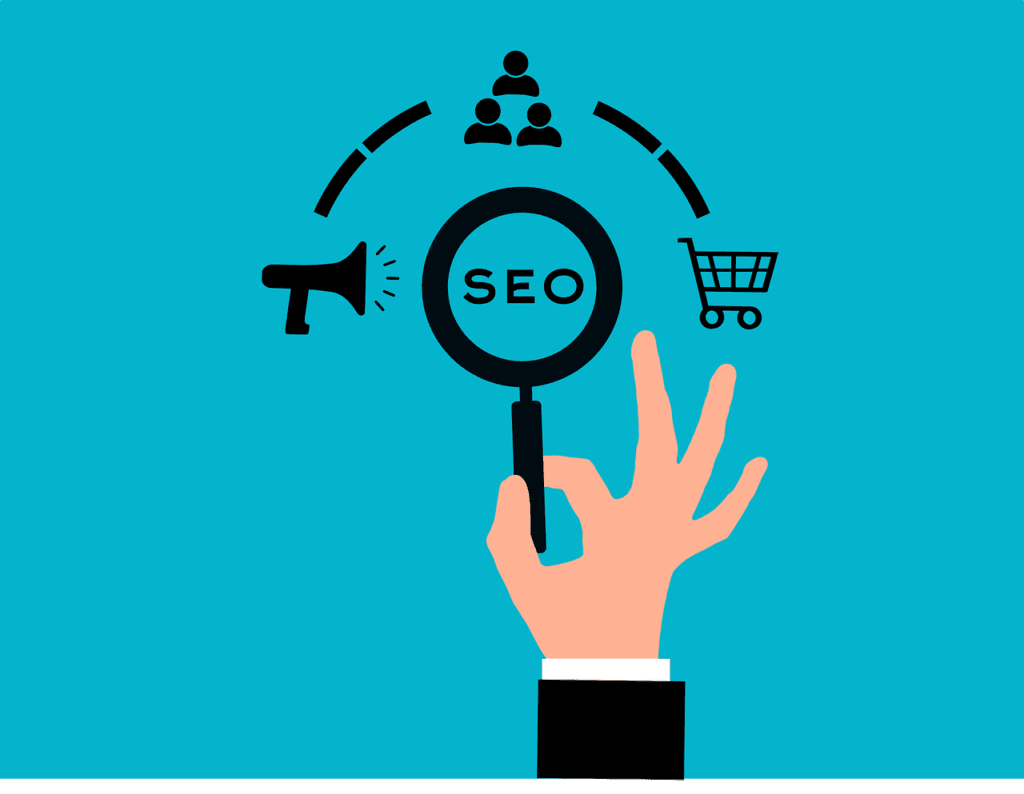Understanding Customer Retention
Importance of Customer Retention
Customer retention plays a critical role in the sustainability and growth of any business. It is essential to recognize that acquiring new customers can be five times more expensive than retaining existing ones. By focusing on retaining your customer base, you can significantly reduce the financial burden of customer acquisition initiatives while enhancing the overall lifetime value of your accounts.
Research indicates that approximately 65% of a company’s business comes from existing customers (Custify). Despite this substantial contribution, many businesses lack a solid customer retention strategy. Prioritizing retention not only stabilizes revenue but also contributes to more predictable growth over time. Retained customers tend to spend more through upselling, cross-selling, and renewals, creating a reliable foundation for your business.
| Key Metrics | Importance |
|---|---|
| Cost of Acquisition | Acquiring new customers is 5-25 times more expensive than retaining existing ones. |
| Existing Customer Value | Approximately 65% of business revenue comes from existing customers. |
| Revenue Stability | Retained customers increase spending, ensuring predictable revenue growth. |
Cost-Effectiveness of Retaining Customers
Focusing on customer retention is a financially savvy decision for any business owner. As emphasized by data, investing in retention strategies is vastly more cost-effective than trying to acquire new customers repeatedly. The costs associated with customer acquisition initiatives can be mitigated by ensuring your existing customers remain engaged and satisfied with your services (Zendesk).
Creating a strong onboarding experience is vital for customer retention. First impressions matter; effective onboarding includes comprehensive workflows, timely communication, self-service knowledge base access, and celebratory messaging to engage new clients effectively. For reference, the retention rate benchmark for small businesses generally weakly hovers around 20%, while e-commerce businesses should target rates above 35%.
By implementing proven customer retention methods, you can enhance your overall return on investment and ensure a thriving customer base.
Strategies for Customer Retention
To effectively retain your customer base, you must implement a variety of strategic approaches. The following sections outline essential strategies focused on enhancing customer loyalty and engagement.
Rapid Support Resolutions
A critical aspect of maintaining customer satisfaction is providing timely support. Research indicates that 73 percent of customers view rapid support resolutions as a key element of a positive customer experience. By establishing efficient support channels and ensuring that queries are addressed swiftly, your business can significantly improve customer retention rates.
Building Customer Loyalty
Creating loyal customers is not just beneficial; it is crucial for sustainable business growth. Retaining existing customers often generates more revenue than acquiring new ones. Positive experiences lead to higher chances of repeat purchases and brand advocacy. Implementing loyalty programs and personalized marketing strategies can play a pivotal role in enhancing customer loyalty.
| Customer Loyalty Strategy | Description |
|---|---|
| Loyalty Programs | Reward customers for repeat purchases, enhancing their likelihood of return. |
| Personalized Marketing | Tailor communications based on customer preferences to deepen connections. |
| Exclusive Offers | Provide special deals to loyal customers, making them feel valued. |
Online Community Engagement
Building an online community for your customers offers a platform for them to interact, share experiences, and address issues collectively. Such a community not only fosters engagement but also helps in identifying and resolving customer concerns early on, ultimately enhancing long-term loyalty.
| Community Engagement Benefits | Description |
|---|---|
| Peer Support | Customers can assist each other, reducing the burden on support teams. |
| Shared Experiences | Encouraging discussions about positive or negative experiences strengthens community ties. |
| Proactive Feedback | Early identification of issues can lead to faster resolutions. |
Referral Programs
Implementing a referral program encourages existing customers to advocate for your brand. By rewarding them for introducing new customers, you can simultaneously boost retention and acquisition efforts. This approach not only incentivizes loyalty among current customers but also builds a broader customer base.
| Referral Program Elements | Description |
|---|---|
| Incentives | Offer rewards for successful referrals, motivating customers to participate. |
| Easy Processes | Simplify the referral submission process to enhance participation rates. |
| Clear Communication | Promote the program effectively to ensure customers are aware and motivated. |
By adopting these strategies, you can enhance your retention efforts and build a more committed customer base. Focusing on rapid support, loyalty building, community engagement, and referrals will lead to a more satisfied customer base that is likely to contribute to long-term business success. For more detailed methods, consider exploring articles on customer retention methods and customer relationship management strategies.
Metrics for Customer Retention
Measuring customer retention is crucial for understanding the effectiveness of your strategies in maintaining and growing your customer base. Utilizing key metrics allows you to quantify your efforts and identify areas for improvement.
Customer Retention Rate Calculation
The customer retention rate is an essential metric for assessing how well you are retaining your existing customers. To calculate the customer retention rate (CRR), follow this formula:
- Determine the number of customers at the start of a period (Starting Customers).
- Count the number of customers at the end of the period (Ending Customers).
- Subtract the number of new customers acquired during the period from the Ending Customers to find the Net Customer Loss.
- Divide the Net Customer Loss by the Starting Customers and multiply by 100 to get the retention percentage.
The formula can be summarized as follows:
[ \text{CRR} = \left( \left( \text{Ending Customers} – \text{New Customers} \right) \div \text{Starting Customers} \right) \times 100 ]
A healthy annual churn rate between 5-7% indicates that solid customer retention strategies are in place.
| Metric | Calculation Example | Result |
|---|---|---|
| Starting Customers | 100 | |
| Ending Customers | 90 | |
| New Customers | 10 | |
| Net Customer Loss | 90 – 10 = 80 | |
| Customer Retention Rate | (80 / 100) x 100 | 80% retained |
Key Customer Retention Metrics
To analyze your customer retention and overall loyalty effectively, consider tracking the following key metrics:
- Net Revenue Retention (NRR): Measures the percentage of recurring revenue retained from existing customers, including upsells, expansions, and contractions, within a specific period.
- Customer Churn Rate: The percentage of customers who stop using your service within a given time frame.
- Customer Lifetime Value (CLV): The total revenue expected from a customer over the duration of their relationship with your business.
- Net Promoter Score (NPS): Gauges customer loyalty by asking how likely customers are to recommend your business to others, providing insight into customer satisfaction.
- Adoption and Usage Metrics: Measure how frequently and extensively customers engage with your products or services.
A positive correlation generally exists between customer satisfaction and customer retention. Satisfied customers are more likely to remain loyal, although exceptions can occur. By focusing on these metrics, you can develop more effective customer relationship management strategies and identify methods for improving customer loyalty.
Factors Affecting Customer Retention
Retaining your customer base is not solely dependent on products or services; several key factors play a pivotal role in enhancing customer loyalty. Understanding these elements can help you develop strategies to improve retention effectively.
Customer Satisfaction
Customer satisfaction is a critical determiner of retention. Research indicates that 81% of satisfied customers are more likely to spend money with a brand again after a positive experience, while 95% of dissatisfied customers will take action after a negative experience (Survicate). Regularly measuring customer satisfaction through surveys or feedback forms can provide insights into areas that need improvement.
| Satisfaction Level | Likelihood to Repurchase |
|---|---|
| Satisfied | 81% |
| Dissatisfied | 95% likely to take action |
Personalization Strategies
Implementing personalization strategies can lead to a significant increase in customer loyalty. It has been reported that 80% of companies observe a lift in customer loyalty after tailoring experiences based on individual customer needs (HubSpot). Personalizing customer interactions not only boosts retention rates but also enhances the overall customer experience.
Consider analyzing customer demographics through customer demographics analysis and customer base segmentation to effectively personalize your engagement.
Building Trust
Trust is integral to retaining customers. According to studies, 81% of customers consider trust a crucial factor in making a purchase decision. This reliability stems from a consistent delivery of quality and a commitment to customer satisfaction. To build trust, you should ensure transparent communication, fulfill promises, and continuously deliver value to your customers.
| Trust Factor | Importance in Purchase Decision |
|---|---|
| Trust | 81% |
Customer Feedback Integration
Integrating customer feedback into your business strategy is essential for both improvement and retention. Establishing a feedback loop allows you to collect, analyze, and act on customer input, helping to identify areas for enhancement. Employing methods to gather ongoing feedback ensures that you are addressing flaws and enhancing the overall user experience effectively.
Utilize collected feedback to improve your customer relationship management strategies and tailor products or services to better align with customer expectations. This proactive approach can significantly enhance your efforts in retaining your customer base.
Enhancing Customer Experience
Creating a seamless customer experience is essential for retaining your customer base and fostering long-term loyalty. This section outlines key strategies to enhance customer experience, focusing on onboarding processes, personalized interactions, proactive engagement, and effective communication.
Strong Onboarding Processes
A robust onboarding experience plays a pivotal role in customer retention. First impressions are indeed significant, as they lay the foundation for ongoing relationships. A well-structured onboarding process encompasses:
- Detailed workflows to guide new users
- Timely follow-up emails to keep customers informed
- Access to a self-service knowledge base for immediate support
- Celebratory messages to recognize milestone accomplishments
These elements ensure that customers feel valued and supported from the outset, enhancing their overall satisfaction.
| Onboarding Element | Purpose |
|---|---|
| Workflows | Guide users seamlessly through your service |
| Emails | Maintain engagement and provide timely updates |
| Knowledge Base | Empower customers to find solutions independently |
| Celebratory Messaging | Build emotional connections and appreciation |
Personalized Customer Experiences
Personalization has become increasingly vital for fostering loyalty. Companies that implement personalization strategies often report a significant increase in customer loyalty and relationship strength, with 80% seeing positive outcomes (HubSpot).
Tailoring experiences based on individual customer needs can greatly impact retention. Customers exposed to a personalized experience demonstrate a 49% higher likelihood of making impulse purchases, emphasizing the importance of customization. Consider:
- Segmenting your customer base for targeted communications
- Offering personalized product or service recommendations
- Adapting marketing messages to align with customer preferences
Proactive Customer Engagement
Engaging customers proactively is key to understanding their sentiments and improving their experience. Maintaining a customer communication calendar can help you track customer interactions effectively. This enables you to:
- Identify common queries and concerns
- Recognize challenges faced by customers
- Provide opportunities for upselling and cross-selling
Regular interactions reinforce the relationship between you and your customers, ultimately strengthening retention strategies (HubSpot).
Communication Strategies
Effective communication is central to a positive customer experience. High-quality customer service must include actively soliciting feedback to identify areas for improvement. Listening to customers and responding to their needs demonstrates commitment to their satisfaction. Consider:
- Implementing a feedback loop to gather insights
- Providing various channels for customer communication (email, chat, phone)
- Utilizing customer data to inform future interactions
By enhancing your customer experience through these strategies, you will be better positioned to retain your customer base and foster long-term relationships. Optimize your efforts by integrating these approaches into your overall customer relationship management strategies.
Customer Retention Challenges
Customer retention is vital for sustainable business growth. However, several challenges can arise in the pursuit of retaining your customer base. Understanding these challenges is essential for implementing effective strategies.
Acquiring vs. Retaining Customers
One of the most pressing issues in customer retention lies in the balance between acquiring new customers and retaining existing ones. Research indicates that acquiring a new customer is five times more expensive than retaining an existing one. In fact, it costs seven times more to gain a new customer than to keep one already in your fold. Despite this, a significant 63% of marketers perceive new customer acquisition as the most vital advertising tool.
The importance of focusing on retention cannot be overstated; acquiring new customers can incur costs ranging from five to twenty-five times more than keeping existing ones. As such, businesses must prioritize strategies that enhance customer loyalty and engagement to promote long-term success.
| Cost Factor | New Customers | Existing Customers |
|---|---|---|
| Average Cost | 5-25x | 1x |
| Marketers Prioritizing Acquisition | 63% | – |
Importance of Excellent Customer Service
Exceptional customer service serves as a cornerstone for retaining customers. Satisfied customers are more likely to stay loyal; when they feel their concerns are addressed, their likelihood of recommending your business increases.
Customer satisfaction has a direct correlation with retention; hence, striving for prompt and effective resolutions is essential. If your business’s customer service team can quickly resolve issues, it can enhance customer satisfaction levels and foster loyalty. It is critical to establish a culture of customer service excellence to improve overall experiences.
| Customer Service Impact | Effect on Customers |
|---|---|
| Satisfaction Level Improvement | Increases Loyalty |
| Prompt Resolutions | Enhances Experience |
Employee Productivity and Customer Satisfaction
The productivity of your employees can significantly influence customer satisfaction and, consequently, retention rates. Research indicates that happy employees who feel supported are 20% more productive and are more apt to provide satisfactory service to customers (Custify).
Effective customer service is often a reflection of employee morale. When your team is engaged and appreciated, their enthusiasm translates to better service for your customers. It is essential to cultivate a supportive work environment to foster employee satisfaction, which in turn aids in customer retention.
Promoting these essential aspects of your business can streamline customer retention efforts and contribute to a healthier, more engaged customer base. For insights into enhancing your customer retention methods, explore our customer retention methods page.
Embracing Paid Loyalty Programs
Paid loyalty programs can serve as a powerful tool in your strategy for retaining your customer base. By investing in these programs, you position your brand to effectively enhance customer engagement and loyalty.
Benefits of Paid Loyalty Programs
Paid loyalty programs offer several key benefits that can significantly impact your business. According to a 2020 McKinsey survey, members of paid loyalty programs are 60 percent more likely to spend more on the brand after subscribing, compared to a 30 percent likelihood associated with free loyalty programs (McKinsey). This heightened investment in the brand leads to greater revenue potential.
Furthermore, consumer spending on paid loyalty programs reached an estimated $25 billion to $30 billion in 2019, showing a growth rate of 25 to 50 percent from the previous year (McKinsey). This trend indicates a strong consumer demand for such initiatives.
| Year | Estimated Spending on Paid Loyalty Programs |
|---|---|
| 2018 | $20 billion |
| 2019 | $25 – $30 billion |
| Growth Rate | 25% – 50% |
High-Value Customer Retention
Paid loyalty programs can effectively help retain high-value customers. These programs may allow companies to fund premium rewards that might be cost-prohibitive to offer otherwise. As outlined by McKinsey, this enables businesses to retain their highest-value customers without devaluing the overall loyalty offerings.
In highly fragmented or undifferentiated markets, these programs can also prevent brand switching. For example, CVS’s CarePass program has demonstrated success in locking in valuable customers within its ecosystem, solidifying customer loyalty against competitors.
Focusing on Customer Engagement
To maximize the effectiveness of paid loyalty programs, it is essential to focus on providing benefits that clearly outweigh the fees involved. Your strategy should emphasize experiential advantages that foster engagement and create a deeper connection with your customers (McKinsey).
Maintaining high engagement levels is vital to prevent early cancellations of loyalty memberships. High retention rates ultimately contribute to a stronger and more sustainable customer base. By aligning your marketing efforts with customer preferences through customer relationship management strategies, you can enhance retention, further solidifying your brand’s position in the market.
Implementing Paid Loyalty Strategies
Incorporating paid loyalty programs into your marketing strategy can significantly enhance your ability to retain your customer base. This section details strategies for funding premium rewards, locking in high-value customers, and maintaining customer engagement.
Funding Premium Rewards
Paid loyalty programs provide the opportunity to offer premium rewards that you may find too costly to distribute broadly. These programs help maintain strong relationships with your highest-value customers without devaluing your loyalty offerings. By charging a fee for participation, you can generate funds dedicated to these premium rewards, enhancing the overall customer experience.
| Reward Type | Funding Model | Example |
|---|---|---|
| Premium Discounts | Subscription Fee | Loyalty rewards for a nominal monthly charge |
| Exclusive Access | Membership Fee | Early access to products for paid members |
| Special Events | Annual Fee | Invitations to members-only events |
Locking in High-Value Customers
Paid loyalty programs are particularly effective in markets that are highly fragmented or undifferentiated. They help lock high-value customers into your ecosystem, thereby reducing the likelihood of brand switching. An example is CVS’s CarePass program, which has successfully retained customers through exclusive offers and benefits tailored to their needs.
To effectively lock in high-value customers, consider the following strategies:
- Provide exclusive deals that are only available to members.
- Introduce tiered loyalty levels that reward long-term patrons more generously.
- Regularly communicate unique benefits that reinforce their decision to remain committed to your brand.
Maintaining Customer Engagement
For your paid loyalty strategy to succeed, it is essential to offer benefits that clearly outweigh the fees associated with membership. By offering experiential advantages and maintaining high engagement levels, you can effectively prevent early cancellations of subscriptions.
Here are some ways to foster ongoing engagement:
- Regularly update loyalty members with new rewards and bonus point opportunities.
- Create exclusive content, webinars, or workshops tailored to your loyal customers.
- Encourage feedback and involvement in shaping future loyalty offerings.
By strategically implementing these paid loyalty strategies, you can enhance customer retention, ensuring your efforts to grow and maintain your customer base yield positive results. For additional insights, explore our resources on customer retention methods and customer relationship management strategies.




















